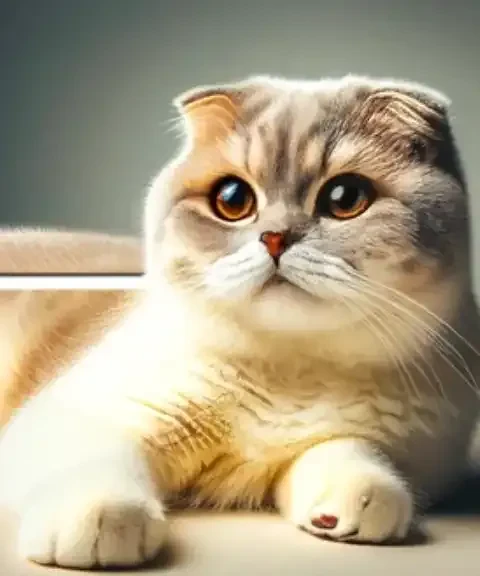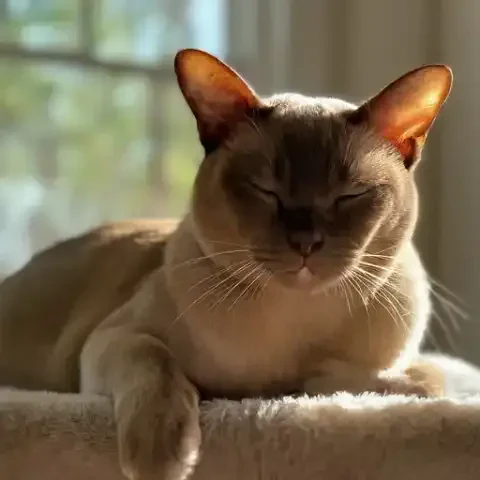From the sleekest ebony panther to the fluffiest cloud of white, from the tiger-striped tabby prowling through the undergrowth to the delicate point coloration of a Siamese aristocrat, the world of cat coats is a breathtaking spectacle of natural artistry. These aren't just fur coverings; they are walking works of art, living tapestries woven from genes and pigments, each color and pattern telling a silent story of inheritance and evolution. For centuries, humans have been captivated by the sheer visual diversity of feline coats. Beyond simple aesthetics, these coats offer clues to breed identification, hints at temperament (though less reliably!), and an entry point into the fascinating world of feline genetics. Whether you're a seasoned cat fancier, a curious pet owner, or simply an admirer of feline beauty, understanding the intricacies of cat coat colors and patterns is a journey into a world of surprising complexity and undeniable charm. Consider this your comprehensive, yet accessible, guide to unraveling the mysteries of feline finery. We will explore the spectrum of solid hues, the subtle nuances of dilute shades, the captivating patchwork of tortoiseshell and calico, the mesmerizing swirls and stripes of tabby patterns, the elegant gradients of colorpoint coats, and the enchanting randomness of white spotting – all while gently lifting the veil on the genetic building blocks that create this stunning array of feline appearances. Prepare to be amazed by the sheer variety and the underlying science that paints each cat in its own unique and beautiful light.
To truly appreciate the kaleidoscope of cat coats, we must first delve into the basic science that underpins it all: genetics and pigments. While feline genetics is a complex and ever-evolving field of study, the foundational principles that govern coat color are surprisingly accessible, even to those without a scientific background. At its heart, coat color, like many other traits, is determined by genes – the blueprints of inheritance passed down from parent to kitten. These genes provide instructions for the production of pigments, the substances that give hair its color. In cats, two primary types of pigment reign supreme: eumelanin and phaeomelanin. Eumelanin is responsible for producing black pigment. Depending on the specific genetic variations, eumelanin can manifest as a deep, rich black, or be modified into chocolate or cinnamon shades. Phaeomelanin, on the other hand, is the pigment behind the red and orange hues, ranging from deep, fiery reds to softer, ginger oranges and paler creams. The interplay of these two pigments, and the genes that control them, is the starting point for understanding the vast array of feline coat colors. Two key genes stand out as primary architects of this color palette: the 'B' (Black) gene and the 'O' (Orange) gene. The 'B' gene, in its dominant form, dictates the production of black eumelanin pigment. Variations within this 'B' gene, however, can lead to the chocolate and cinnamon variations we see in some breeds. The 'O' (Orange) gene is unique in that it is sex-linked, residing on the X chromosome. This gene is solely responsible for the production of phaeomelanin, or orange/red pigment. It's crucial to remember that this is a simplified overview. The world of feline coat genetics is far more intricate than these two genes alone. Numerous other genes interact and modify these basic pigments, influencing the intensity of color, the distribution of patterns, the presence of white spotting, and a myriad of other subtle nuances. However, understanding the roles of eumelanin, phaeomelanin, the 'B' gene, and the 'O' gene provides a solid foundation for navigating the fascinating world of cat coat colors and patterns.
Solid colors represent the foundational hues of the feline palette, the pure, unmixed shades from which more complex patterns and dilutions are derived. Black, the epitome of sleek elegance, is a cornerstone of solid feline colorations. A true solid black cat possesses a coat of deep, rich black, often described as "ebony" or "jet black," lacking any hint of tabby markings or other intermingling colors. Genetically, this solid black coat arises from the dominant 'B' allele (for Black pigment production) in combination with the non-agouti 'a' allele. The non-agouti allele suppresses the expression of tabby patterns, resulting in the uniform, solid color. While ideally a deep, even black, some black cats may exhibit a tendency towards "rusting," where sun exposure can lighten the black pigment, resulting in reddish or brownish tinges, particularly in their undercoat. White, in the realm of cat coats, is not technically a pigment itself, but rather the absence of pigment. A solid white cat is a blank canvas, a pure, pristine coat masking any other underlying colors or patterns that might be genetically present. This immaculate white coat is caused by the 'W' (White Masking) gene, a dominant gene that effectively suppresses the production of pigment across the entire coat. It's important to distinguish solid white cats from albinos. While both lack coat pigment, solid white cats typically have blue or gold eyes, indicating the presence of pigment in their irises, unlike true albinos who lack pigment entirely, resulting in pink eyes. Red, often referred to as orange or ginger, is another foundational solid color, radiating warmth and vibrancy. Red cats display a spectrum of shades, ranging from deep, fiery reds to brighter, almost marmalade ginger tones. The genetic basis for red coats lies in the sex-linked 'O' (Orange) gene, which dictates the production of phaeomelanin pigment. It's a curious quirk of feline genetics that if a cat is genetically predisposed to be red (possessing the 'O' gene), they will always express a tabby pattern unless another gene specifically masks it, such as the solid color non-agouti gene or the white masking gene. Therefore, even solid red cats, upon closer inspection, often reveal faint tabby markings, particularly in strong sunlight. Cream is essentially a diluted version of red, a softened, pastel hue within the orange spectrum. Cream cats exhibit a coat color ranging from soft, pale orange to a delicate, light beige. Genetically, cream arises from the combination of the 'O' (Orange) gene, responsible for red pigment, and the 'd' (dilute) gene, which softens and lightens pigment intensity. Like red cats, cream cats also carry an underlying tabby pattern, though it is often very subtle and barely visible due to the diluted color. Chocolate represents a richer, warmer brown within the solid color spectrum, evoking the luxurious hue of dark chocolate. Solid chocolate cats possess a coat of warm, deep brown, lacking the cool tones of black and exhibiting a distinct chocolatey richness. This solid chocolate coloration arises from a recessive 'b' allele, a variation of the dominant 'B' gene responsible for black. Because it is recessive, both parents must carry the 'b' allele for a kitten to express a solid chocolate coat, making it a less common solid color than black. Cinnamon, sometimes referred to as sorrel, is an even lighter, reddish-brown solid color, reminiscent of the spice it’s named after. Solid cinnamon cats display a coat of lighter, reddish-brown, exhibiting a warm, spicy tone. This even rarer solid color is due to another recessive allele, 'b¹', which is a further variation of the 'B' gene and even rarer than the 'b' allele for chocolate. To produce a solid cinnamon coat, a cat must inherit two copies of the 'b¹' allele. Fawn is the dilute version of cinnamon, a soft, pale beige-tan within the brown spectrum. Solid fawn cats exhibit a coat of pale, warm beige or tan, a delicate and subtle solid hue. Fawn coloration arises from the combination of the 'b¹' allele (cinnamon) and the 'd' (dilute) gene, further lightening and softening the cinnamon pigment. As a dilute of an already rare color, solid fawn is an exceptionally rare sight in cats. Lilac, also known as lavender or frost, is a delicate, dusty grey solid color with a subtle pinkish or lavender undertone. Solid lilac cats exhibit a coat of pale, dusty grey with a distinctive soft, pinkish or lavender hue, an elegant and understated color. Lilac is the dilute version of chocolate, resulting from the combination of the recessive 'b' allele (chocolate) and the 'd' (dilute) gene. This dilution of chocolate pigment creates the soft, muted grey-lavender shade, making solid lilac a relatively rare and sought-after color. Blue, the most common dilute solid color, presents as a spectrum of greys, ranging from soft, silvery grey to darker, slate-grey tones. Solid blue cats exhibit a coat of soft, silvery grey or a slightly darker, slate grey, a cool and sophisticated hue. Blue is the dilute version of black, resulting from the combination of the dominant 'B' allele (black) and the 'd' (dilute) gene. The dilute gene softens and lightens the black pigment, transforming it into the spectrum of grey shades we recognize as blue. Blue is a relatively common dilute color, particularly prominent in breeds like the Russian Blue and British Shorthair, where solid blue coats are a breed standard.
Dilute colors, as the name suggests, represent a softened and lightened palette within the feline color spectrum. The key to understanding dilute colors lies in the aptly named 'd' (dilute) gene. This gene, in its recessive form, exerts a remarkable influence on pigment granules, causing them to clump together irregularly within the hair shaft. This clumping effect alters the way light interacts with the pigment, resulting in a visual "dilution" of color intensity. The 'd' gene itself is recessive, meaning a cat must inherit two copies of the 'd' allele, one from each parent, to express a dilute coat color. When present in double recessive form ('dd'), the dilute gene acts upon the primary pigments, softening and lightening the solid colors to create their pastel counterparts. The most common and well-known dilute color pairings are: Black dilutes to Blue, transforming the rich, deep black into soft, silvery or slate grey. Chocolate dilutes to Lilac, lightening the warm, dark brown to a delicate, dusty grey with lavender undertones. Cinnamon dilutes to Fawn, softening the reddish-brown spice hue into a pale, warm beige-tan. Red/Orange dilutes to Cream, transforming the vibrant red and ginger tones into soft, pastel creams and pale oranges. The dilute gene essentially acts as a filter, softening the intensity of the solid colors, creating a gentler, more muted, and often exquisitely beautiful range of pastel shades within the feline coat color spectrum. Visualizing solid and dilute versions side-by-side vividly illustrates the transformative effect of the dilute gene, showcasing the softened palette and subtle elegance it brings to feline coloration.
Tortoiseshell and calico patterns introduce the captivating world of patched coloration, adding splashes of contrasting hues to the feline coat. Tortoiseshell, affectionately known as "tortie," is a mesmerizing patchwork of red or orange and black, or their dilute versions, intermingled across the coat. Crucially, true tortoiseshell cats lack white spotting; the pattern is solely composed of the intermingled red/orange and black (or dilute equivalents). The genetic basis of the tortoiseshell pattern is intricately linked to the sex-linked 'O' (Orange) gene. Because the 'O' gene resides on the X chromosome, and females typically possess two X chromosomes (XX), they have the genetic capacity to express both black and orange pigments simultaneously. This simultaneous expression is due to a phenomenon called "genetic mosaicism," where, in each cell of a female cat's body, one of the two X chromosomes is randomly inactivated. This random X-chromosome inactivation leads to patches of cells expressing orange pigment (from the active X chromosome carrying the 'O' gene) and patches expressing black pigment (from the active X chromosome not carrying the 'O' gene). This creates the characteristic tortoiseshell patchwork effect, a beautiful and unique genetic mosaic. Tortoiseshell patterns can exhibit variations based on the underlying colors. "Chocolate Tortie" features patches of red/cream and chocolate. "Blue Cream Tortie," also known as "dilute tortie," showcases patches of cream and blue, representing the dilute versions of red/orange and black, respectively. Calico, often referred to as "tortoiseshell and white" or "tricolor," builds upon the tortoiseshell foundation by adding white spotting to the mix. A calico cat displays the characteristic tortoiseshell patchwork of red/orange and black (or dilute versions), but also features distinct white patches interspersed throughout the coat. The genetic basis of calico includes both the tortoiseshell genetics (the sex-linked 'O' gene and X-chromosome inactivation) and the 'S' (White Spotting) gene, which is responsible for the white patches. Like tortoiseshells, calico cats are also almost exclusively female due to the same genetic requirement of two X chromosomes to express both black and orange pigments. If dilute colors are present in a calico pattern, they are often referred to as "dilute calico" or, less commonly, "calimanco," showcasing patches of cream, blue, and white. Male tortoiseshell and calico cats are exceedingly rare. This is because males typically possess only one X chromosome (XY). To express both black and orange pigments, and therefore display a tortoiseshell or calico pattern, a cat would genetically need two X chromosomes. Rare exceptions occur in males with a chromosomal abnormality called Klinefelter syndrome, where they possess an XXY chromosome configuration. These XXY males can be tortoiseshell or calico, but are almost always sterile due to the chromosomal imbalance.
Tabby patterns introduce the mesmerizing world of stripes, swirls, and spots to the feline coat, adding another layer of visual complexity and wild beauty. The foundation for all tabby patterns lies in the Agouti gene, designated as 'A'. This gene exists in two main allelic forms: the dominant 'A' (Agouti) allele and the recessive 'a' (non-Agouti or solid color) allele. The Agouti gene, when dominant, allows for the expression of tabby patterns by controlling the distribution of pigment within individual hairs. Agouti hairs exhibit "banding," meaning they have alternating bands of dark and light pigment along their length. This banding creates the characteristic tabby appearance. Conversely, the recessive 'a' allele, when present in double recessive form ('aa'), results in a non-agouti coat, suppressing the banding effect and leading to solid coat colors, as discussed earlier. There are four basic tabby patterns, each with its own distinctive visual characteristics and genetic nuances. Mackerel tabby, often described as "striped tabby," is the most common and considered the "wild-type" tabby pattern. Mackerel tabbies exhibit narrow, vertical stripes running down their sides, resembling the stripes of a mackerel fish (hence the name). They also feature a distinctive "M" marking on their forehead, dark "eyeliner" outlining their eyes, and a dark line extending along their nose. Genetically, mackerel tabby is determined by the dominant 'Tᵃ' allele, the most common form of the tabby gene. Classic tabby, sometimes called "blotched tabby" or "marbled tabby," presents a softer, more swirling pattern compared to the sharp stripes of mackerel tabby. Classic tabbies exhibit swirling, marbled patterns on their sides, often with a distinctive "bullseye" pattern on their flanks and a "butterfly" pattern across their shoulders. Their stripes tend to be broader and less defined than mackerel stripes. The classic tabby pattern arises from the recessive 'tᵇ' allele, a variant form of the 'T' gene. For a cat to display a classic tabby pattern, it must inherit two copies of the 'tᵇ' allele. Spotted tabby, as the name suggests, features spots all over the body, creating a wild, almost leopard-like appearance. Spotted tabby patterns can range from small, delicate spots to larger, more irregular blotches, depending on genetic modifiers. Genetically, spotted tabby is determined by the 'Tˢᵖ' allele, the spotted tabby allele, which is believed to modify the mackerel tabby pattern, breaking up the stripes into spots. In essence, a spotted tabby is genetically a modified mackerel tabby pattern. Ticked tabby, also known as Abyssinian tabby or agouti tabby, presents a unique "salt-and-pepper" look, lacking distinct stripes or spots on the body. Ticked tabbies exhibit a "ticked" appearance due to the agouti hairs covering their body, each hair banded with alternating light and dark pigment. While body markings are minimal, tabby markings are typically still visible on the face, legs, and tail. Genetically, ticked tabby arises from a combination of the 'Tᵃ' allele (mackerel tabby) and the 'Aᵇ' (Abyssinian) allele. The 'Aᵇ' allele acts as a pattern suppressor, effectively minimizing the stripes or spots on the body, leaving primarily the ticked agouti hairs to define the coat. While often associated with the Abyssinian breed, ticked tabby patterns can occur in other breeds as well. Tabby patterns are incredibly versatile and can be further modified and combined with other colors and patterns. Tortoiseshell tabby, often referred to as "torbie," combines the tortoiseshell patchwork with underlying tabby markings, creating a complex and visually striking pattern. Tabby point, seen in breeds like Siamese and Colorpoint Shorthair, combines tabby markings with the colorpoint pattern, resulting in tabby stripes and markings confined to the points (face, ears, paws, tail). Furthermore, numerous pattern modifier genes can subtly influence tabby patterns, affecting stripe width, spot size, and overall pattern clarity, contributing to the endless variations and individual beauty within the tabby spectrum.
Colorpoint pattern, the hallmark of breeds like Siamese, Himalayan, Ragdoll, and Birman, is a distinctive and elegant pattern characterized by darker coloration concentrated on the "points" of the body – the face mask, ears, paws, and tail – while the body remains a lighter, contrasting color. This creates a striking gradient effect, emphasizing the feline form. The genetic basis of the colorpoint pattern lies in a temperature-sensitive gene, denoted as 'cˢ'. This 'cˢ' allele is recessive, meaning a cat must inherit two copies, one from each parent, to express the colorpoint pattern. The 'cˢ' gene encodes for an enzyme involved in pigment production that is sensitive to temperature. In warmer areas of the body, such as the torso and flanks, the enzyme is less active, resulting in reduced pigment production and a lighter body color. Conversely, in the cooler extremities – the face, ears, paws, and tail – the enzyme is more active due to the lower temperature, leading to increased pigment production and the characteristic darker points. This temperature sensitivity explains why colorpoint kittens are often born almost entirely white or cream. At birth, their bodies are uniformly warm, suppressing pigment production across their entire coat. As they grow and their extremities cool down, the temperature-sensitive enzyme becomes more active in the cooler areas, and the points gradually develop their darker coloration over time. A variety of point colors can occur in colorpoint cats, each determined by the underlying color genetics in combination with the 'cˢ' gene. Seal point, the classic Siamese point color, presents with dark brown to black points contrasting against a cream or fawn body. Blue point, a dilute variation, features soft grey points and a cooler, bluish-white body. Chocolate point exhibits warm chocolate brown points and an ivory body. Lilac point, the dilute of chocolate, showcases pale, dusty grey points with a pinkish hue and a glacial white body. Flame point, introducing red/orange into the point coloration, features red or orange points and a creamy white body. Cream point, a dilute version of flame point, displays pale cream points and an almost pure white body. Tortie point combines the tortoiseshell pattern with colorpoint, resulting in points exhibiting a patchwork of tortoiseshell colors. Tabby point, also known as Lynx point, combines tabby markings with colorpoint, resulting in tabby stripes and markings concentrated within the points. The colorpoint pattern, with its elegant gradients and diverse array of point colors, is a testament to the intricate interplay of genetics and environmental factors in shaping feline beauty.
White spotting adds another layer of captivating variation to feline coats, introducing patches of pure white against a background of color or pattern. The 'S' (White Spotting) gene is responsible for the presence of white patches in cat coats. This gene exhibits variable expressivity, meaning it can manifest in a wide range of patterns, from minimal white markings to almost entirely white coats with just a few splashes of color. White spotting is caused by a lack of pigment production in the affected areas, resulting in patches of unpigmented white fur. The 'S' gene itself is thought to interfere with the migration of melanocytes (pigment-producing cells) during embryonic development, resulting in areas where pigment cells are absent, leading to white patches. The degree of white spotting is incredibly variable and is often described using specific terminology. Mitted spotting refers to white coloration primarily confined to the paws, creating the appearance of white "mittens," as seen in breeds like the Birman. Bicolor spotting, perhaps the most common form, features white and colored patches in varying proportions, often with white on the legs, chest, face, and belly, creating a "tuxedo" or "harlequin" effect depending on the distribution. Harlequin spotting describes a pattern where the cat is predominantly white with larger, more defined patches of color typically concentrated on the head and body. Van spotting, the most extreme form of white spotting, results in a cat that is almost entirely white, with color restricted primarily to the head and tail, often with just a few small spots of color on the body. Solid white with spotting, at the extreme end of the white spotting spectrum, describes cats that appear almost entirely white, with only very small, often faint, colored patches, sometimes just a few spots on the head or tail, hinting at an underlying color that is almost completely masked by white spotting. White spotting frequently combines with other coat colors and patterns, creating a vast array of visually stunning combinations. Calico, as previously discussed, is a prime example of white spotting combined with the tortoiseshell pattern, resulting in a tricolored patchwork of red/orange, black, and white. Bicolor tabbies showcase tabby patterns overlaid with white spotting, creating bicolor variations of mackerel, classic, or spotted tabby patterns, adding white patches to the striped, swirled, or spotted background. The white spotting gene, with its variable expression and ability to combine with other color and pattern genes, contributes significantly to the breathtaking diversity and unpredictable beauty of feline coat coloration.
Beyond the foundational colors and patterns, the feline coat color world continues to expand, with rare and emerging colors and patterns constantly being discovered and studied, adding even more depth and fascination to this already rich field. Amber and russet represent relatively new and intriguing colors specifically observed in the Norwegian Forest Cat breed. Amber describes a warm, golden-brown hue, while russet presents as a deeper, reddish-gold. These colors are believed to be caused by variants of the 'non-extension' gene, a gene that typically influences phaeomelanin (red/orange) expression. The exact genetic mechanisms are still under investigation, but these colors represent a relatively recent and breed-specific addition to the feline color palette. Color dilute modifiers are a further layer of genetic complexity, capable of subtly modifying dilute colors, creating even softer and more nuanced shades. The color dilute modifier gene, when present, can further lighten and soften dilute colors like blue, lilac, and cream, resulting in colors described as caramel, apricot, and taupe – incredibly subtle and delicate variations that push the boundaries of the feline color spectrum. Ticked tabby, once almost exclusively associated with the Abyssinian breed, is increasingly appearing in other breeds as well. This spread is likely due to spontaneous genetic mutations and the gradual dispersal of the ticked tabby allele into different breed populations, expanding the expression of this unique and visually striking pattern beyond its traditional breed confines.
Finally, while color and pattern are central to feline coat aesthetics, coat length and texture also play a significant role, interacting with and modifying the visual presentation of color and pattern. Coat length, ranging from the sleek, short coats of Siamese to the luxurious long fur of Persians, significantly affects how color and pattern are perceived. Long hair can soften the appearance of patterns, blurring the sharp lines of tabby stripes or diluting the contrast of colorpoint patterns, creating a more diffused and ethereal look. Conversely, shorthair coats tend to showcase colors and patterns with greater clarity and definition. Coat texture, encompassing variations like wiry coats, curly coats (as seen in Rex breeds), and rexed (velvety) coats, also modifies color presentation. Wiry coats, with their coarser texture, may affect light reflection, subtly altering the perceived shade of a color. Curly or rexed coats, with their crimped or wavy fur, can create unique visual effects, disrupting the smooth flow of color and pattern, and adding a textured dimension to the overall coat appearance. For example, the colorpoint pattern, when expressed in a longhaired breed like the Himalayan, takes on a softer, more blended appearance compared to the sharper contrast seen in shorthaired Siamese, demonstrating how coat length modifies the visual impact of even distinct patterns.
The world of cat coat colors and patterns is a truly breathtaking testament to natural diversity. From the simplest solid hues to the most intricate patchwork and point patterns, from common colors to rare and emerging shades, the feline coat spectrum is a constantly evolving tapestry of genetic artistry. Each cat, regardless of breed, color, or pattern, is a unique individual, a living canvas painted by the complex and beautiful forces of genetics. While rarity and novelty may pique our interest, the true beauty lies in appreciating the inherent wonder and genetic complexity within every feline coat, from the most common tabby to the most exquisitely patterned calico. Let us celebrate this incredible diversity, marvel at the scientific intricacies that underpin it, and cherish the unique charm and individuality that coat color and pattern bring to each and every feline companion who graces our lives and homes. Take a moment to truly observe your own cat, to appreciate the subtle nuances of their coat color, the intricacies of their pattern, the genetic story whispered in every strand of fur – for in their feline finery, lies a world of wonder waiting to be discovered.






